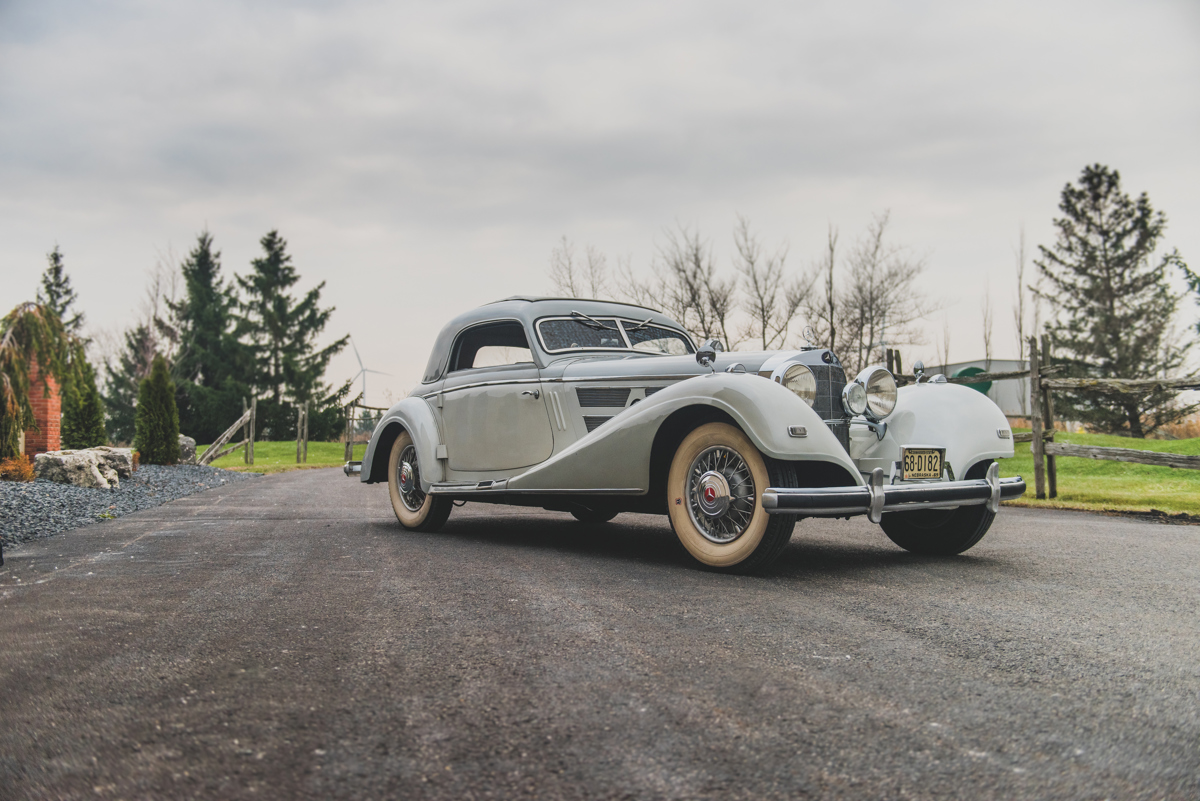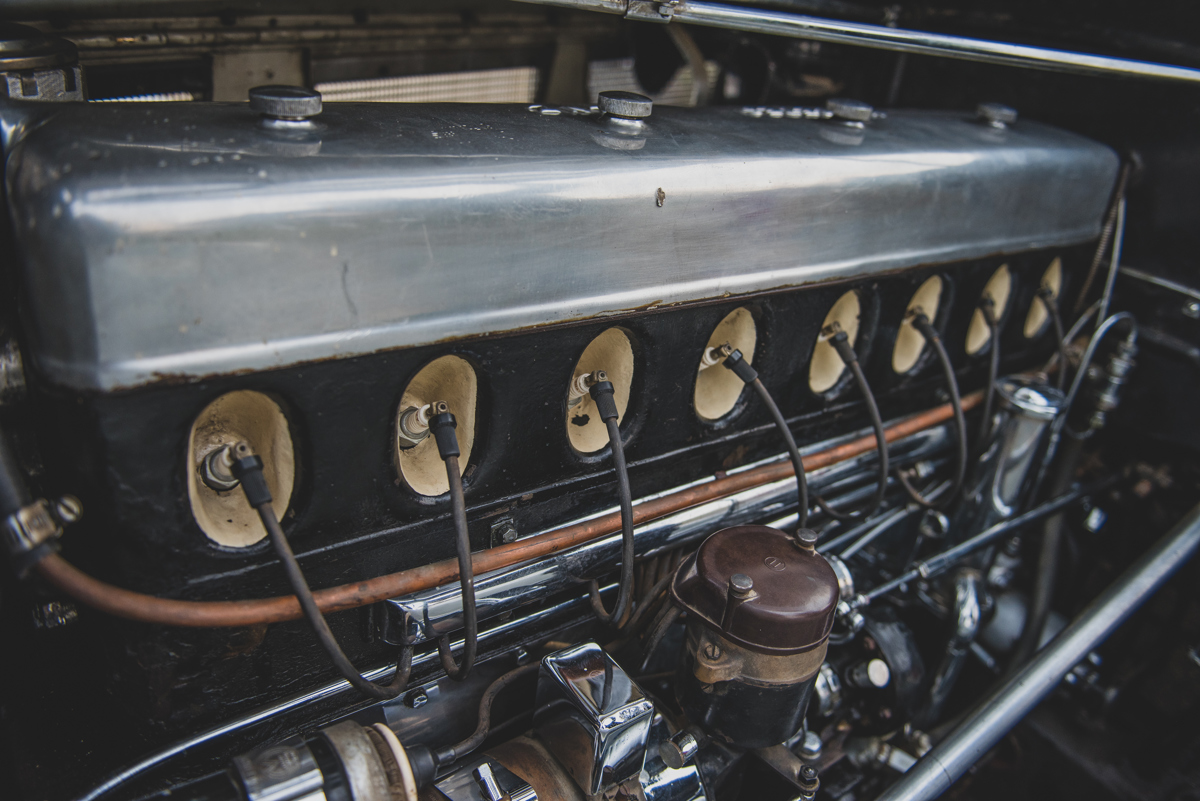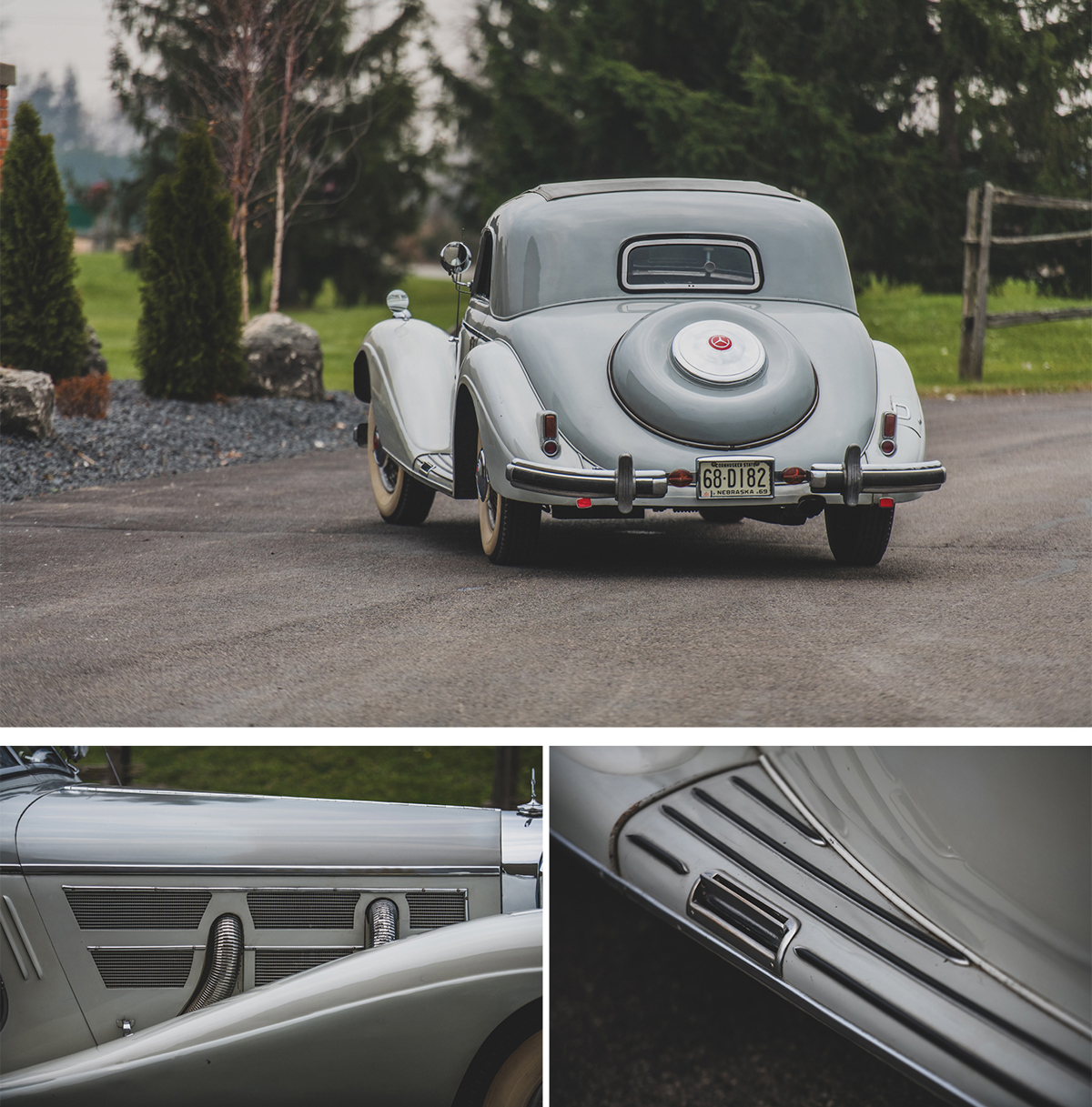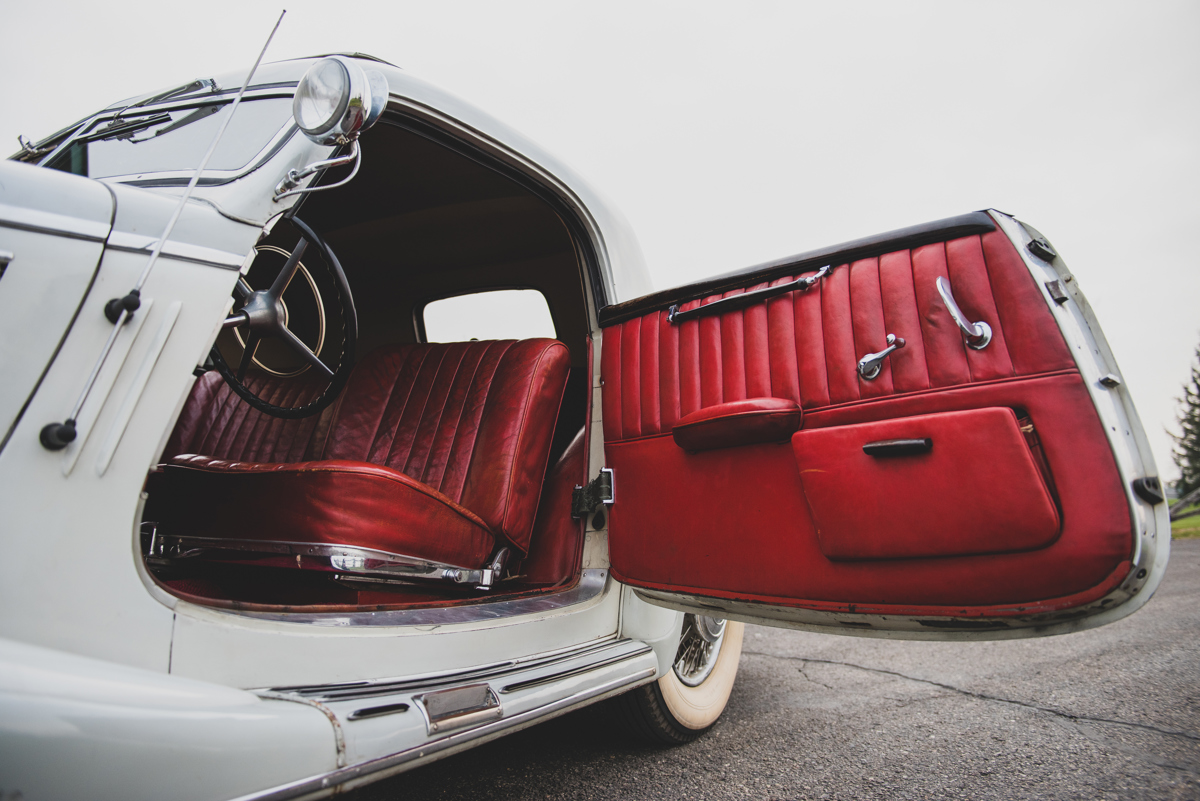The 540 K stands as one of the most prestigious and elegant European automobiles of its era, equally magnificent as it is imposing and truly a testament to Mercedes-Benz’s engineering prowess. A mere 419 chassis were constructed between 1936 and 1940, the majority of which were delivered in one of eleven factory body styles produced by the famed Sindelfingen Werk. Arguably one of the most arresting body styles was the second-generation Cabriolet A, of which only thirty-two examples were built. Flamboyant and curvaceous fenders flow to the rounded tail, which housed dual spare tires. Positioning of the engine 185 mm farther back in the chassis than standard, a feature referred to by the factory as Fahrgestell mit zurückgesetztem Motor, “chassis with setback motor,” allowed for the distinctive “set-back radiator” and resulted in a longer, more aggressive front end—one more closely associated with the fabled Spezialroadster.
1937 Mercedes-Benz 540 K Coupe by Hebmüller
Estimate: $1,000,000 - $1,500,000 USD
Beneath the 540 K’s coachwork, a sophisticated chassis featured independent suspension at all four corners, with unequal-length control arms in the front and coil-spring swing axles at the rear with horizontal assist springs which linked the two axle halves together to prevent rear-wheel tuck-under during hard cornering. Set between the frame rails, a supercharged 5.4-liter inline eight-cylinder engine developed under Mercedes’ chief engineer and ex–racing driver Max Sailer featured a Roots-style supercharger which boosted the 115-horsepower engine to 180 horsepower when engaged.
This example began life as one of the aforementioned Cabriolet A models ordered new by Brabender GmbH, a company still in existence today which supplies laboratory instruments for material testing in chemical and food processing industries. Its second owners, the Henkel family of Düsseldorf, of Henkel & Cie. Chemical Works, commissioned Karrosseriewerke Joseph Hebmüller Söhne in mid-to-late 1951 to fashion a new coupe roofline to the factory coachwork. The convertible top and windshield pillars were removed, and Hebmüller integrated a vee’d two-piece windshield with crank-out windows in place of the original and seamlessly blended it into the profile of the new roof. The skirts were extended and fashioned with chrome strips added to the front fenders, and rectangular marker lights were added. In adding the new roofline, the rear of the 540 K’s body was shortened slightly, the original taillights were exchanged for more modern units, and a metal cover finished in the body color was added to cover the rear-mounted spares. It is believed that this example, chassis no. 154143, is the only 540 K to have been converted to this striking coupe body by the German coachbuilder.
After residing in Europe for several decades, it appeared in the United States around 1954 refinished in a two-tone color scheme of cream with grey fenders under the ownership of Henry A. Rudkin Jr., whose mother, notably, was the founder of the Pepperidge Farm bakery. In 1956 it appeared with Dr. William Hoffman of New York City. By this time, a Golde canvas sunroof had been added, not original to the Hebmüller conversion. It appeared at auction in Denver, Colorado, in 1968, where John P. Quirk purchased the automobile and drove it to his home in Hastings, Nebraska. Mr. Quirk was also simultaneously the owner of one of the Sindelfingen-bodied Spezialcoupes, so the unique appearance of the Hebmüller coupe was not lost on him.
Following an upset at a local car show in the 1970s, apparently losing Best of Show to a freshly restored John Deere tractor, he parked the Hebmüller coupe in his two-car garage and vowed never to show the car again—and it remained there for over forty years. While its existence was known by historians and devout enthusiasts, its whereabouts remained a mystery—even to Jan Melin, who featured an older photograph of the car in his respected book, Mercedes-Benz: The Supercharged 8-Cylinder Cars of the 1930s.
For the first time since 1969, the Hebmüller coupe is offered to the public once again and remains in largely original condition, retaining its original chassis and drive train, complete with covered rear spare and chrome wire wheels. It has been recommissioned by RM Auto Restoration and is currently in running and driving order. Its 1960s paint scheme and red interior show considerable patina, and it remains in overall very solid condition, having spent decades safely stored in the owner’s garage. Today, surviving examples of the Mercedes-Benz 540 K are highly prized and sought after by collectors and enthusiasts alike, and the unique Hebmüller coupe represents a rare opportunity for a new owner to mechanically restore and participate in Classic touring events or to embark on a complete concours restoration. The Missing Coupe has endured as one of the great mysteries of the supercharged Mercedes world and is destined to be an exciting chapter in the story of one of the greatest European automobiles of the interwar period.









